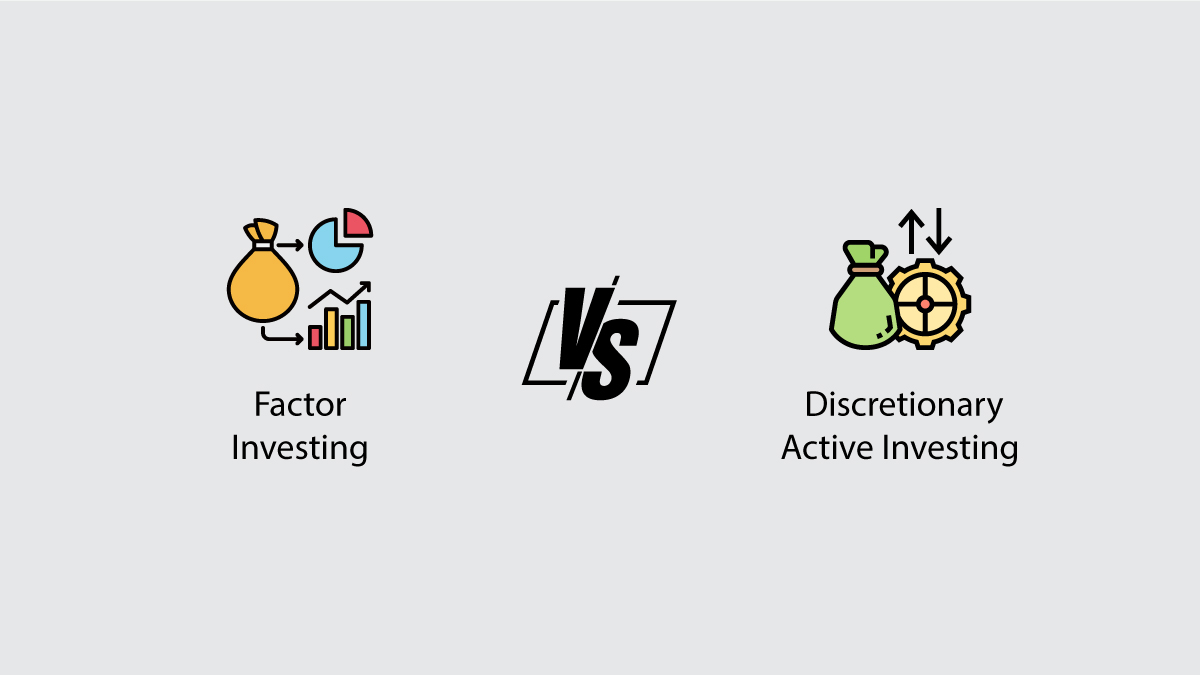Factor Investing vs Discretionary Active Investing: Which one is Better for You?
Factor-based investing and discretionary active investing represent two distinct investment approaches in the financial world, each with its own philosophy, strategies, and risk-return profiles. Understanding the differences between these methods is crucial for investors seeking to optimize their portfolio according to personal investment goals, risk tolerance, and market outlook.
Factor-Based Investing
Definition and Philosophy:
Factor-based investing, also known as smart beta investing, is a strategy that aims to ascertain the presence of specific characteristics that have historically proved to be linked to returns. This approach is built on the foundation of robust investment principles, empirical research and data-driven analysis. It systematically identifies factors such as value, size, momentum, quality, and low volatility, which historically have contributed to high-risk adjusted returns over the long term.
Methodology:
In factor investing, portfolios are constructed using quantitative models that screen and select stocks based on these predefined factors. The models are carefully crafted by research and portfolio management teams using either one or more factors based on their insights. Once the models are built, stocks are selected and weighted based on this. This resulting portfolio is the executed without any human discretion. The emphasis is on the factors themselves to manage risk and generate returns, rather than on the individual stock picks.
Advantages:
- Systematic Approach: Reduces human emotional biases, providing a more disciplined investment process.
- Diversification: By targeting different factors, investors can achieve a diversified portfolio that can perform across various market cycles.
- Transparency: Factor-based strategies are typically transparent, allowing investors to understand what drives their portfolio's performance.
Limitations:
- Model Risk: Reliance on quantitative models means that factor-based investing is susceptible to model inaccuracies or misinterpretations of data.
- Performance Variation: Certain factors may underperform in different market conditions, leading to periods of relative underperformance.
- Unhurried Nature: While systematic, this approach does not adapt to sudden market changes or new information.
Discretionary Active Investing
Definition and Philosophy:
Discretionary active investing relies on the skill, intuition, and experience of portfolio managers to make investment decisions. This strategy is based on the belief that skilled managers can outperform the market by selecting stocks they believe are undervalued or have strong growth potential.
Methodology:
In this approach, portfolio managers conduct detailed fundamental analysis, examining financial statements, industry trends, and economic factors. They use this analysis to handpick stocks, aiming to buy low and sell high. This strategy is less about following a set formula and more about leveraging the insights and expertise of the investment team.
Advantages:
- Flexibility: Active managers can quickly respond to market changes, economic news, or corporate events.
- Risk Management: Active managers can actively manage risk, theoretically avoiding downturns or volatile sectors.
Limitations:
- Performance Inconsistency: The success of active investing heavily depends on the manager's skill, leading to variability in performance.
- Emotional Bias: Subject to human error and psychological biases, potentially impacting investment decisions.
- No Testing: A discretionary approach cannot be back tested. Even if the team has a long track record, it is difficult to forecast their decisions in the future.
Comparative Analysis
Performance: Historically, factor investing has offered a more consistent return profile, though active management can lead to higher peaks in performance, especially in the hands of skilled managers. Identifying these selected few, however, remains a continuing challenge.
Market Adaptability: Discretionary active investing excels in rapidly changing markets where human insight and flexibility can quickly capitalize on new opportunities or mitigate risks. Typically, these adjustments have a balanced possibility of success with emotional biases making it difficult to consistently be right. With its inherent disciplined approach, the factor investing approach may not respond to every market change, but the absence of emotional bias may lead to more consistent outcomes.
Investor Suitability: Factor investing has emerged as an essential complement to a portfolio filled with traditional active funds. It offers a completely differentiated approach and is now considered a must for any investor seeking genuine diversification on their portfolio.
Risk Profile: The risk in factor investing is more quantifiable and tied to specific market factors. In discretionary active investing, risk is also influenced by the individual decisions and biases of the portfolio manager.
Conclusion
Factor-based and discretionary active investing offer different pathways to achieving investment goals. Factor investing is systematic, data-driven and suited for all investors with a portfolio dominated by discretionary active funds. It is not necessary to choose between the two approaches. Rather, it is advisable that investors use both types of funds to unlock a new level of diversification and add to long term portfolio stability.
« Previous Next »